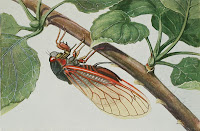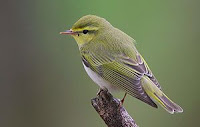Welcome to the 4th installment of our FEATURE "POETIC FORMS", to get inspired and know the world of different forms of poetry and I am Shashi your host. Every month on the 3rd Wednesday, I will try to give you info about some forms of poetry which has attracted me and inspired me..
This post will also have some interesting example's to inspire you to write some poetry in the form.... so here we go friends with one of the most interesting forms that has kept me captivated for decades
....HAIKU ....
One of the most interesting form of Poetry from Japan, which is all about creating an image within the reader's mind with very few words...
Wish this post inspires you to paint some beautiful images within 17 syllables and in 3 lines.
Go on... read and then post some of your own trial runs, rough drafts or your polished gems of HAIKU. I look forward to reading them and come back to you with my suggestions and my thoughts...
How to Submit My Poetry?
Add your entry via InLinkz below by clicking on the blue button, and leave a comment in case it is your first time! It would be great if you could link back to us on your blog.
Now without any further delay... here is this month's POETIC FORM "HAIKU" for you to sink your creative teeth in and let your words flow....
Classic Haiku
 Haiku are short, brilliantly vivid poems containing visually complete descriptions of moments in a poet’s experience. In the space of their original 17 Japanese syllables, haiku express worlds of profound emotion and philosophical insight. Simple on the surface, yet fascinatingly complex on close study, Haiku have universal appeal and the number of languages into which they have been translated testify to this.
Haiku are short, brilliantly vivid poems containing visually complete descriptions of moments in a poet’s experience. In the space of their original 17 Japanese syllables, haiku express worlds of profound emotion and philosophical insight. Simple on the surface, yet fascinatingly complex on close study, Haiku have universal appeal and the number of languages into which they have been translated testify to this.
Much, though not all, early Japanese poetry was written by nobility, and despite the strict conventions of behaviors imposed on courtiers of the 8thto the 11th centuries, much of their poetry still radiates inspiration and sparkle today.
Nature images, such as cherry blossom, in early Japanese poetry became one of the most characteristic features of the canon. In other poems such as this by the 8th centaury poet Takechi no Kurohito, a note of melancholy suffuses the poet’s vivid perception, and the snapshot of natural beauty is modulated by the suggestion of human activity, a technique often used by Haiku poets many centuries later.
Travelling and lonely, I see beneath a hill
A boat painted with red clay rowing to the other side.
- Kurohito
 |
| Murasaki Shikibu, illustration by Tosa Mitsuoki (17th century) |
Writers of the medieval period in Japan
In the haste we make to leave this world of dew
May there be no time between the first and last.
- Genji
A world of dew before the autumn winds,
Not only theirs, these fragile leaves of grass
-Empress
 |
| Chūnagon Yakamochi by Kanō Tan'yū |
The inherent sadness in life’s transient incompleteness is a theme that would preoccupy the great Haiku Poets.
A knowledge of classical poetic tradition represented in the 8th century anthology Man’yoshu and the 10thcentury Kokinshu was indispensable to later poets writing haiku.
The term Waka – a word meaning “Japanese poem” came into use in the 9th century, to minimize the confusion with Chinese Poetry being read and written by educated Japanese people at a time during the T’ang Dynasty when Chinese arts threatened to become overly influential in Japan China
The short form of Waka, later become known as Tanka, which grew to be the most popular poetic vehicle and Haiku developed from it.
The Kokinshu – whose ‘thousands of leaves’ represents the oldest poetic tradition in Japan
Haiku Rules:
While some Haiku poets claimed a degree of personal freedom, most obeyed decreed compositional rules. First the Haiku consisted of 17 syllables, made of three phrases of five, seven and five syllables. Within this format, the Haiku was generally divided also into two parts standing in contrast or reversal to each other.
A poem might start with a traditional image such as cherry blossom, full moon or dew and then re-focus to a lower perhaps clashing image. A seasonal word (Kigo) was another prescriptive component of Haiku. Other rules underlined the subtler aspects of Haiku. If classical correctness could be ‘lowered’ to let in descriptions of ordinary life, it was, said Basho, important to ‘correct’ the ordinary, imbuing it with poetic exaltation (Fuga). In turn Fuga has to be used to express important ideas: the spiritual wealth within modest and simple things (Wabi); beauty, mystery and elegance (Yugen) as in the example below
Stillness and solitude –
Sinking into stones,
The trill of cicadas
- Basho
And melancholy sadness and tranquility (Sabi and Shori)
On a withered branch
A crow has settled.
Nightfall in autumn.
- Basho
Or in the spirit of poetic madness (Fukyo)
Let me show you,
You market people,
This hat filled with snow.
- Basho
And sometimes in shockingly comic ‘lightness’ (Karumi)
A bush warbler
Leaves its droppings on the rice cake
At the edge of the verandah.
-Basho
Emphasizing the shift in tone, a cutting word (Kireji) usually sits at the end of one of the phrases. The cutting word was often a semantically meaningless sentence-ending particle such as kana, ka, ya, heri or ran. Such word sounds did not themselves contribute meaning but acted both to divide the poem into two rhythmic halves and to set up a contrast between the two poem’s parts. A seasonal word Kigo was another prescriptive component of Haiku. Early classical literature contained a huge vocabulary of words that implied not only a season but an emotion appropriate to it. Spring, with its mood of optimism, was implied by cherry blossom and certain birds. The bright but often fatiguing summer was often suggested by flower and tree words. Autumn melancholy was expressed by ‘lonely’ images, such as a full moon, wind and dying leaves. Cold words like snow alluded to the hard experience of winter. Poets writing in the spirit of haikai added less refined seasonal words: Dandelion, garlic, horseradish and mating cats all connoted spring for example.
Some of the times, Haiku also shows of an acceptance of the life’s impermanence. The most famous Haiku Master Basho’s haiku some times also demonstrates the genuine Buddhist enlightenment. The following very famous Haiku by the most famous Haiku Master Basho expresses most vividly the truth – the enactment of both, the phenomenon, what is and its passing. In this Haiku, a creature living unconsciously, according to its nature, is shown in the context of the man made artifice of an old garden pond, highlighting the simple bare and eternally ordinary ‘is-ness’ of all existence in the present moment:
Old pond
A frog jumps in,
The sound of water
The Milestones…
After Basho, there have been many great poets who took Haiku to the greater heights …
Buson
The bite of my axe.
Sudden revelation –
There is life in this tree!
As Buson accepts his death quietly in this farewell poem
White plum blossoms,
Night turns to dawn –
The time has come
Kobayashi Issa
Alone among the shady bushes
A girl is singing
A rice planter's song
Masaoka Shiki
A river in summer
There’s a bridge here, but
My horse prefers water
Kaikyo
With useless authority
The great horned owl
Sits moon-eyed in daylight
Etsujin
I envy the tomcat:
How easily he lets go of
Love’s pain and longing
Ranran
The child cries at her breast.
And the mosquito also bites
The sleeping mother
Senna
With ink-stained lips,
The boy leaves his poem
For the cool outdoors
______________
For further reading and my personal journey in knowing and embracing Haiku, please check out my blog feature @ Haiku – The essence of a poetic moment
Now Join in with Linkz below to share, to read some great talents and get inspired...
________________
ॐ नमः शिवाय
Om Namah Shivaya
Text and Image Sources: Tom Lowenstein’s Classic Haiku and Wikipedia
Greetings from The Purple Treehouse,
We redo Shashi's Haiku Form so that you can submit
Haiku
to our site, in celebrating Christmas and New Year of 2011-2012, Have Fun!




























